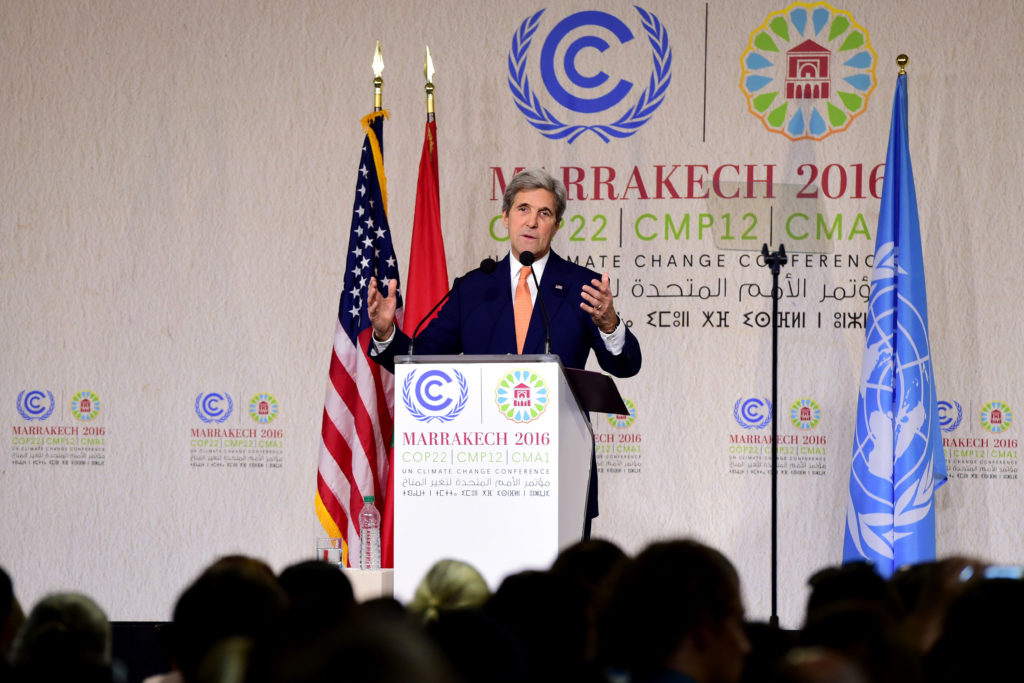It’s been described as a “slap in the face,” “slaughter,” “a punitive … assault on science, the environment, and indeed the planet.”
Aside from being inappropriate and irresponsible, these remarks are how some in the policy world and media have depicted cuts to global warming spending in President Donald Trump’s first budget proposal.
People seem to have forgotten—or perhaps never noticed—just how much the government spends on direct climate programs.
Trump’s budget proposal does in fact eliminate or cut a number of climate programs. But you don’t have to scratch too far beneath the surface to realize there are legitimate justifications for doing so.
Even if the federal budget won’t be balanced on the back of eliminated climate programs, there are a number of basic problems with government climate spending.
1. Quite simply, there are a lot of global warming programs.
At least 18 federal agencies administer climate change activities, costing at least $77 billion between fiscal years 2008 and 2013, according to the Congressional Research Service.
The Government Accountability Office noted in 2009 that “the federal government’s emerging adaptation activities were carried out in an ad hoc manner and were not well coordinated across federal agencies, let alone with state and local governments.”
For all the Obama administration’s emphasis on global warming as an issue, the Government Accountability Office’s December 2016 assessment found only partial improvement in program management and could not yet determine if government standards showed whether programs were being effective, as they had only just been implemented.
2. Most of the money goes to green tech rather than science.
According to the Government Accountability Office, the bulk of federal climate spending has gone to technology development rather than science, wildlife, or international aid.
This has been particularly true in more recent years as a result of the Obama administration’s failed stimulus package, which funneled billions of dollars into energy technologies.
The Department of Energy is notorious for spending on research, development, demonstration, and commercialization of technologies like wind, solar, geothermal, electric vehicles, biofuels, coal carbon capture and sequestration, small nuclear, and batteries.
If these technologies are economically viable, there will be plenty of private sector capital available to develop them. Hardworking taxpayers shouldn’t have to dump money into speculative or failing technology companies or pad the bottom lines of successful ones.
3. There’s a lot of wasteful spending.
As just one example of wasteful spending, Office of Budget and Management Director Mick Mulvaney highlighted the National Science Foundation’s grant for a global warming musical. (The nearly $700,000 grant was awarded in 2010.)
There are many other equally ridiculous examples, such as an Environmental Protection Agency grant for “green” nail salon concepts in California.
There are other much larger boondoggles, too. The Navy spent hundreds of millions of dollars on biofuels to meet a political objective to “jumpstart” a domestic biofuel economy with no strategic advantage for military capabilities.
>>> A First Look at Energy Issues in Trump’s Budget
Despite clear direction from Congress that fuels be cost-competitive, the executive branch camouflaged the costs of the Navy’s biofuel program by subsidizing it through the U.S. Department of Agriculture’s Commodity Credit Corporation program and the Department of Energy.
While the Navy’s price per gallon may appear cheap, the actual total cost to the government is much higher.
4. International climate initiatives are fatally flawed.
There are a number of problems with America’s continued participation in the U.N. Framework Convention on Climate Change, the body that has produced international global warming agreements and, most recently, the Paris Protocol.
One would think that an international climate conference aimed at reducing greenhouse gas emissions would be the perfect opportunity to have a teleconference to show some good faith. But instead, government officials from around the world fly to lavish venues while telling you to buy hybrids and eat less meat.

Then-Secretary of State John Kerry spoke at the 2016 gathering of member nations of the U.N. Framework Convention on Climate Change in Marrakech, Morocco. (Photo: Zhao Dingzhe Xinhua News Agency/Newscom)
Each year, the result is the same: symbolic commitments that shame industrialization and the use of fossil fuels with little to no actual impact on the climate.
Furthermore, the Palestinian Authority’s participation in the Paris Protocol should be cause enough to halt funding as Congress has stipulated under current law.
As the Trump budget proposes, the U.S. should also end funding to the quasi-scientific body behind the Paris Protocol—the Intergovernmental Panel on Climate Change. This panel’s studies have been subject to bias, manipulation, and poor data.
5. There are major problems and gaps in climate science.
The fact is, climate modeling is at this point an inexact science. Models have proven to be inaccurate, and regulatory cost-benefit accounting metrics based on them are indefensible.
It is thus no surprise that massive government policies like the Paris Protocol and Clean Power Plan are demonstrably ineffective in addressing global temperatures.
There are many areas of disagreement and uncertainty among climate scientists, not to mention biologists, meteorologists, oceanographers, economists, and others with relevant expertise.
Exacerbating this is the role the federal government has played in toxifying the scientific debate on global warming. Rather than fostering scientific discovery in a field that is a mere few decades old, the federal government appears to have expressed bias in funding science that supports federal climate policies.
Science that challenges the current narrative is pilloried in the press and labeled “denialism,” whereas an intellectually honest approach would seek to understand and improve the science.
The debate is not improved by demands for RICO investigations or anti-science statements castigating those with different opinions as part of the “flat earth society” with their “heads in the sand,” and encouraging people to “find the deniers near you—and call them out today.”
We don’t need more spending on iterative studies telling us that coffee could be more expensive and snakes bigger thanks to global warming. We need better modeling, better understanding of basic science, more data, and a better, transparent discussion on climate science and climate policies.
Even after the president’s proposed cuts, there is plenty of money left in the federal budget to study and model the climate.
For instance, the Office of Oceanic and Atmospheric Research, a division that includes many climate programs within the National Oceanic and Atmospheric Administration, would be cut by more than $150 million, but still retain a hefty $324 million.
>>> Time for Trump to Fulfill Promise and Withdraw From Paris Climate Agreement
Let’s also not forget the role that universities, nonprofits, and international organizations play in studying the global climate.
Eliminating wasteful spending, some of which has nothing to do with studying the science at all, is smart management, not an attack on science.
It’s time to end the boondoggles and hold the federal government’s climate science activities to the same standards of rationality and cost effectiveness as other government spending.




























